Langtang Gosainkunda Trek: A Journey Through Nepal's Heart
The Langtang Gosainkunda Trek is a captivating adventure that weaves through the Langtang Valley, ac...
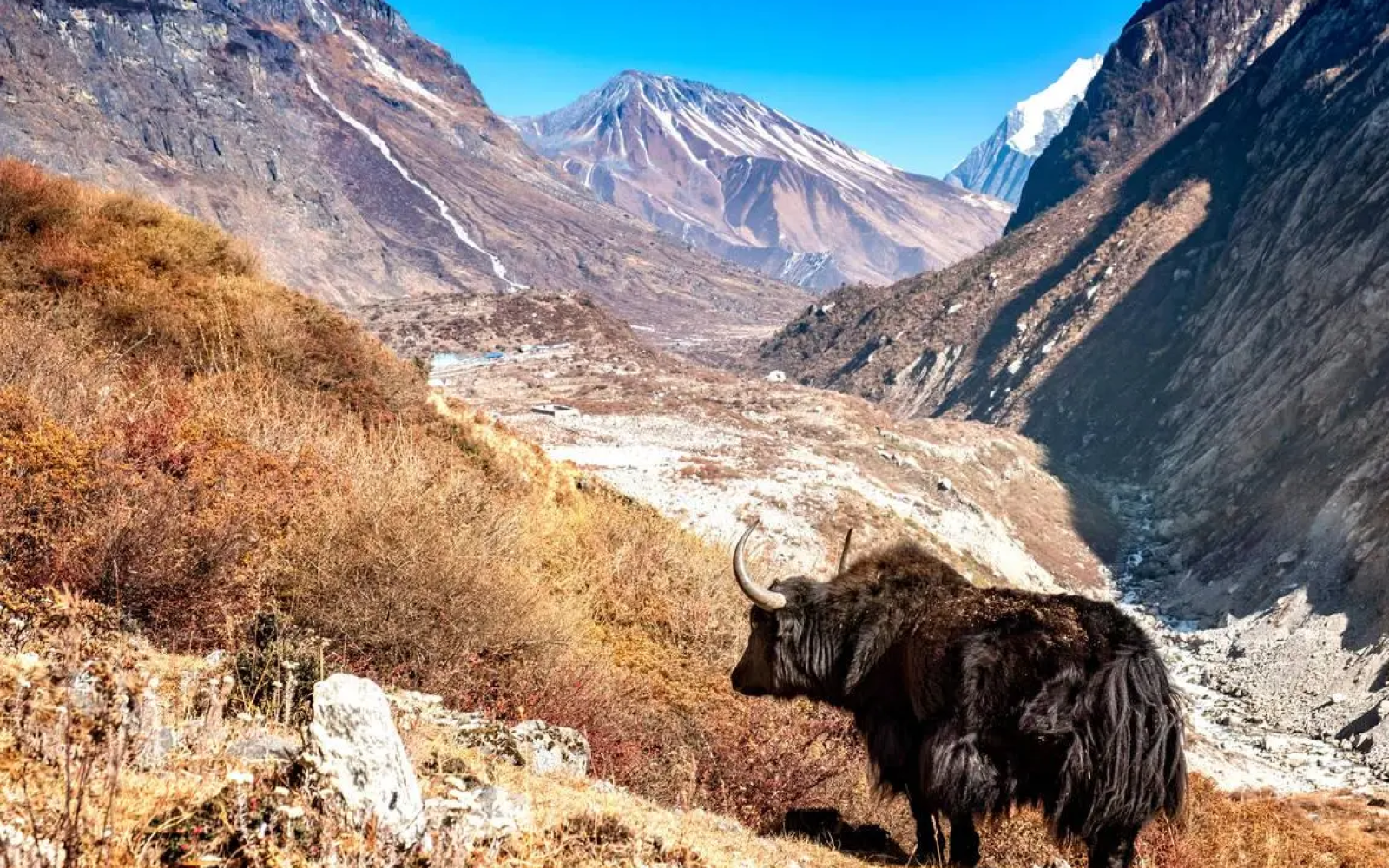
Trekking in Nepal is one of the most rewarding experiences for adventure seekers and nature lovers alike. The country is home to some of the world’s tallest peaks, including Mount Everest, and offers a rich tapestry of landscapes ranging from lush forests to arid highlands. The Himalayan trails are not just about scenic grandeur—they're also deeply interwoven with local culture, spiritual traditions, and centuries-old lifestyles. Whether you choose a challenging route like the Everest Base Camp or a more moderate one like the Langtang Valley Trek, trekking in Nepal offers a chance to witness awe-inspiring mountain vistas, diverse wildlife, and remote villages that retain a strong sense of heritage.
Beyond the trails, Nepal's trekking experiences are enhanced by its warm, hospitable people. Teahouses along the routes provide cozy accommodations and local meals, creating opportunities for cultural exchange. Trekkers often find that conversations with locals, learning about Sherpa or Tamang customs, and participating in small village festivals become as memorable as the natural wonders. With routes that accommodate all skill levels and durations, trekking in Nepal continues to attract travelers from around the world who seek a journey that’s both physically invigorating and spiritually enriching.
The Langtang Valley Trek is one of Nepal’s most scenic and accessible trekking routes, located just north of Kathmandu. Often described as the “Valley of Glaciers,” the Langtang region is renowned for its breathtaking alpine landscapes, snow-capped peaks, cascading waterfalls, and dense rhododendron and bamboo forests. This trek typically takes 7–10 days, making it an excellent choice for those looking for a shorter yet immersive Himalayan experience. It traverses the culturally rich region inhabited by the Tamang people, whose Tibetan-influenced traditions offer unique insights into life in the high Himalayas.

What sets the Langtang Valley Trek apart is its relative tranquility compared to busier routes like Everest and Annapurna. The journey through this valley is both serene and soulful, offering a sense of solitude that heightens the connection with nature. After the devastating 2015 earthquake, the region suffered tremendous loss, particularly in Langtang Village, but has since seen remarkable rebuilding efforts. Trekking through Langtang is not just a journey through stunning terrain but also a testament to the resilience and spirit of its people. The trek culminates in panoramic views of peaks such as Langtang Lirung (7,227 m), making every step feel truly worthwhile.
Scenic and Natural Highlights
Cultural and Spiritual Highlights
Wildlife and Biodiversity
Optional Side Treks & Add-ons
Syabrubesi, a small village nestled in the Rasuwa District, is the traditional starting point for the Langtang Valley Trek. Located approximately 117 kilometers from Kathmandu, the journey to Syabrubesi usually involves a bumpy but scenic drive that can take 6–8 hours. The route follows the Trishuli River, winding through terraced farmland, steep hillsides, and occasional glimpses of the snow-capped Ganesh Himal range. Upon arrival, trekkers are greeted by a charming village atmosphere, dotted with local teahouses, shops, and friendly villagers going about their daily routines.
Although Syabrubesi itself is not large, it plays a crucial logistical and cultural role in the trek. It provides a final opportunity to stock up on supplies, acclimatize slightly, and rest before heading deeper into the Langtang region. The village is home to a mix of ethnic groups, including Tamang and Sherpa communities, and it offers the first real introduction to the cultural backdrop of the trek. Many travelers choose to spend a night here to relax and prepare for the trail ahead, making it more than just a transit point—Syabrubesi marks the beginning of the adventure and serves as a warm welcome to the Himalayas.
Lama Hotel is a quaint settlement deep in the heart of a lush forest, providing a peaceful and rejuvenating rest stop on the Langtang Valley Trek. Despite its name, it’s not an actual hotel but rather a collection of simple lodges and teahouses nestled along the Langtang Khola riverbank. Surrounded by dense rhododendron, oak, and bamboo forests, the area is a haven for nature lovers. The sound of the flowing river, chirping birds, and occasional glimpses of langurs or red pandas add to its tranquil charm.
As trekkers ascend from Syabrubesi, reaching Lama Hotel usually takes 5–6 hours, and it is often the first night’s stop on the trail. The route to Lama Hotel offers a steady but manageable climb through pristine forests, crossing several suspension bridges. The peaceful ambiance of the place makes it an ideal spot to rest and recover from the initial day’s trek. At night, the forest quietens down, and the starry skies overhead create a magical atmosphere for trekkers to unwind. The simplicity and serenity of Lama Hotel embody the essence of trekking in Nepal—connecting with nature in its purest form.
Langtang Village is a poignant yet inspiring highlight of the trek. Once the largest settlement in the Langtang Valley, the village was almost entirely destroyed by a massive landslide triggered by the 2015 earthquake. Over 300 lives were lost, including villagers and trekkers. In the aftermath, the area stood as a symbol of tragedy—but today, it stands as a testament to resilience and rebuilding. New lodges and homes have been constructed slightly above the original site to avoid future geological risks, and returning trekkers often feel a deep emotional connection when they arrive.

The village offers striking panoramic views of the surrounding peaks, especially Langtang Lirung, which towers majestically over the valley. As trekkers approach, they pass through yak pastures, mani walls, and chortens, all of which reflect the strong Buddhist heritage of the region. Langtang Village is more than a resting place—it's a cultural and emotional milestone on the trek. Visitors often spend a day or two here to acclimatize, enjoy local hospitality, and reflect on the strength of a community that has endured unimaginable hardship yet continues to welcome guests with grace and warmth.
Kyanjin Gompa is the crown jewel of the Langtang Valley Trek, both spiritually and scenically. Situated at an altitude of approximately 3,870 meters, this small but significant village is named after the ancient Buddhist monastery (gompa) that stands as its spiritual heart. The monastery, surrounded by prayer flags and stone chortens, offers a peaceful retreat and a place for quiet reflection. It also provides insight into the deep-rooted Tibetan Buddhist culture that permeates the region. The atmosphere here is serene, as visitors often pause their trek for a day or more to soak in the spiritual energy and acclimatize.
Aside from its cultural significance, Kyanjin Gompa is surrounded by some of the most dramatic landscapes of the entire trek. Snow-capped peaks like Langtang Lirung, Dorje Lakpa, and Yala Peak form a towering amphitheater around the village. Trekkers can explore nearby landmarks such as the local cheese factory, where traditional yak cheese is still made using age-old methods. The relatively flat terrain in the valley basin allows for easier exploration and acclimatization hikes, including to the foot of Langtang Lirung’s glacier. Whether you’re gazing at mountain vistas, learning from local monks, or simply enjoying a cup of tea in a teahouse, Kyanjin Gompa offers an unforgettable blend of nature, culture, and tranquility.
Tserko Ri is widely regarded as the best viewpoint on the Langtang Valley Trek, offering breathtaking 360-degree views of the surrounding Himalayan giants. Located at around 4,984 meters, the peak requires an early morning hike from Kyanjin Gompa, typically taking 4–6 hours round trip depending on conditions and acclimatization. The climb is steep and challenging, especially in the thinner air at higher elevations, but the reward is nothing short of spectacular. From the summit, trekkers are treated to sweeping views of Langtang Lirung, Yala Peak, Dorje Lakpa, and even distant views of the Tibetan plateau on a clear day.
The sunrise hike to Tserko Ri is particularly popular, as the golden light spills across snow-covered ridges and the sky shifts in brilliant hues. Along the way, trekkers pass through high-altitude yak pastures and may encounter grazing animals, hardy alpine flora, and possibly even Himalayan wildlife. The sense of achievement upon reaching the top is powerful, making it a favored optional side trek for those who want to push their limits. Tserko Ri is not just a physical high point of the Langtang trek—it’s also an emotional and visual pinnacle that many consider the climax of their journey.
Rimche is a quiet and often-overlooked resting spot nestled between Lama Hotel and Langtang Village. Located within a dense forest at around 2,400 meters, Rimche offers a peaceful break on the trail, ideal for trekkers looking for solitude and a natural setting. The lodges here are basic but comfortable, surrounded by towering pine, oak, and rhododendron trees. The sounds of birds and the Langtang Khola river below create a calming ambiance that’s perfect for resting after a long day’s trek.
While Rimche doesn’t offer the sweeping mountain views of higher altitudes, its charm lies in its stillness and connection to nature. It’s a good place to pause, especially for those adjusting to altitude or breaking up the journey with shorter daily segments. The area is known for wildlife activity, with trekkers occasionally spotting langurs, Himalayan monals, or even the elusive red panda in the surrounding forest. Rimche represents a slower pace and a deeper immersion into the natural beauty that defines much of the Langtang Valley trek.
Ghodatabela, which translates to "Horse Stable," is a scenic mid-point along the Langtang Valley trail, located at around 3,000 meters. This picturesque spot is set against a backdrop of alpine meadows and forests, offering stunning views of snow-capped peaks that rise dramatically above the valley. It is often used as a rest stop for lunch or even an overnight stay for those pacing their ascent more gradually. The open grasslands and the broad valley floor make it an ideal spot to pause and take in the grandeur of the Langtang region.
Once a military checkpoint, Ghodatabela now hosts a few teahouses and a checkpoint where trekking permits are inspected. The transition from dense forest to more open terrain becomes evident here, and trekkers often notice the shift in flora and fauna as they move into higher altitudes. Yak herds grazing in the meadows and the clear views of Langtang Lirung make this a photographer’s dream. The name and atmosphere of Ghodatabela evoke a sense of frontier wilderness—where trekkers begin to truly feel immersed in the high Himalayas.
Thulo Syabru is a vibrant Tamang village perched on a hillside above the Langtang Khola, offering a perfect blend of cultural immersion and natural beauty. The village is characterized by its traditional stone houses, carved wooden windows, and narrow terraced paths. Unlike the more remote stops along the Langtang Valley Trek, Thulo Syabru is a larger settlement and an important cultural hub. The Tamang people who reside here have preserved their rich customs, language, and religious practices, which are heavily influenced by Tibetan Buddhism.
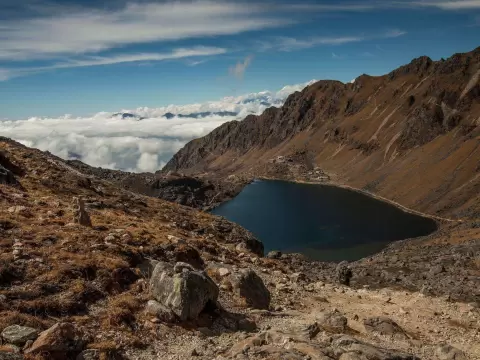
Visitors to Thulo Syabru can explore monasteries adorned with colorful prayer flags, interact with locals, and witness traditional farming and weaving practices. The village also serves as a junction for trekkers heading toward either Langtang Valley or the Gosaikunda Lake trail. The welcoming atmosphere, combined with stunning views of Ganesh Himal and surrounding peaks, makes Thulo Syabru a special cultural and scenic experience. It’s not just a place to rest—it’s a place to learn, connect, and appreciate the heritage of the Tamang community.
Bamboo is a peaceful and verdant stop along the lower part of the Langtang Valley trail, nestled in a dense forest primarily composed of bamboo groves, ferns, and rhododendron trees. Located at around 1,960 meters, this small settlement consists of a few lodges that cater to trekkers seeking an early rest point or a quiet overnight stay. As its name suggests, the area is lush and green, especially during spring and early summer, with a constant chorus of birds and the rustle of wind through leaves enhancing the tranquil environment.
Bamboo is also notable for its wildlife activity. The thick forest surrounding the area is part of the Langtang National Park, which is home to a range of species, including langurs, wild boars, Himalayan monals, and—if you’re lucky or very quiet—the elusive red panda. The route through Bamboo is also dotted with small waterfalls and streams, making it a refreshing part of the journey. It’s a gentle, atmospheric contrast to the high-altitude zones ahead and offers a glimpse into the ecological diversity of the Langtang region.
Shin Gompa, also known as Chandanbari, is a spiritual and scenic stop on the way to Gosaikunda Lake, often visited by trekkers detouring from the Langtang Valley route. Located at approximately 3,300 meters, Shin Gompa offers serene views of the surrounding hills and mountains, making it a favored overnight stop. The main highlights here are its peaceful Buddhist monastery and the renowned yak cheese factory, both of which add cultural and culinary dimensions to the trek.

The monastery is a quiet retreat with prayer wheels, a small prayer hall, and spectacular views, providing a place of reflection for trekkers and pilgrims alike. Just a short walk away is the government-operated cheese factory, where you can sample or purchase fresh yak cheese—a unique treat after days of trekking. Shin Gompa is surrounded by forests of pine and rhododendron, and its open pastures and crisp air offer a calm environment ideal for acclimatization. For those heading toward the sacred alpine lakes of Gosaikunda, it’s both a meaningful and memorable stop, blending spiritual, natural, and gastronomic experiences.
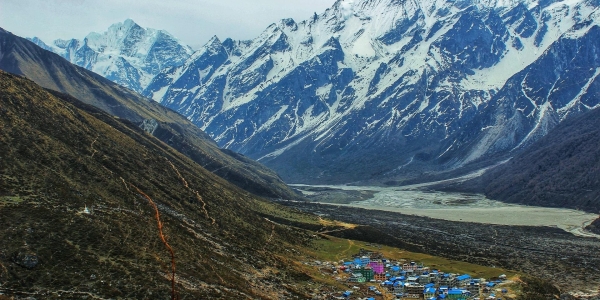
The Langtang Gosainkunda Trek is a captivating adventure that weaves through the Langtang Valley, ac...
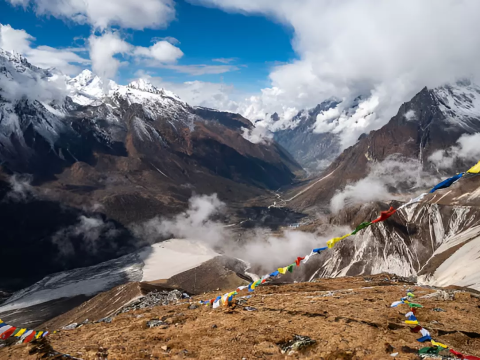
Langtang Mountain is one of the most prominent peaks in the Langtang region, rising majestically to...
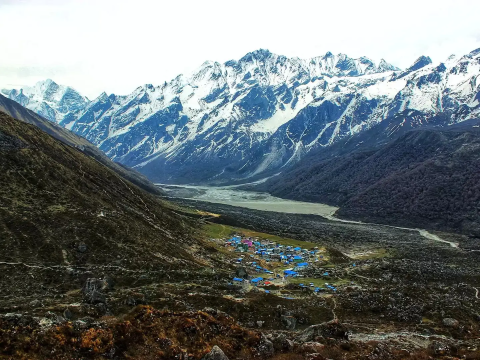
The Langtang Valley Trek is one of the most rewarding and scenic treks in Nepal, offering trekkers t...
